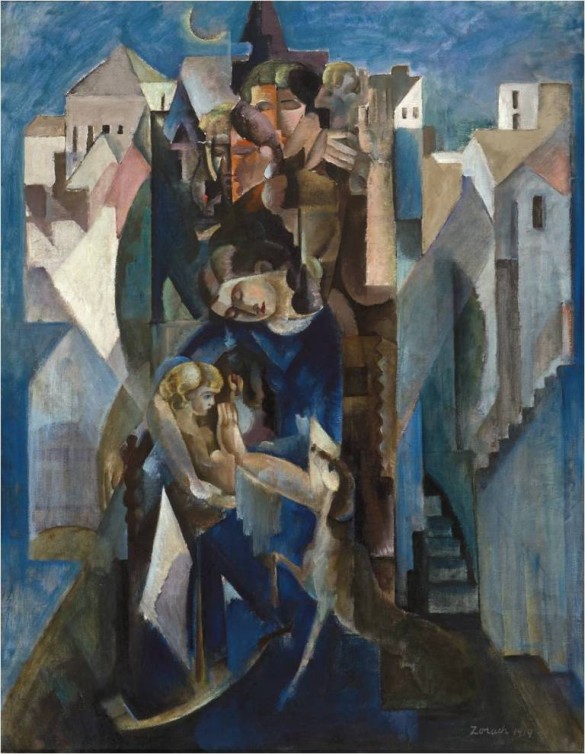Written by Nicole Gaudier, Curatorial Intern
The current exhibit Modern Dialect: American Paintings from the John and Susan Horseman Collection, on display in the Mason Gallery until January 5, 2014, contains works made by various artists in the early to mid 20th century. The Cummer Museum of Art & Gardens’ permanent collection also contains works by three of these artists: William Zorach, John Steuart Curry, and George Wesley Bellows.
William Zorach (1887 – 1966):
Born Zorach Samovich in Lithuania, William Zorach immigrated to the United States in 1896. He changed his name to William Zorach in 1912, a unification of his Lithuanian heritage and his new life in America.
Zorach traveled to Paris in 1910, where he frequented the home of Gertrude Stein, and was introduced to several avant-garde Parisian artists. The work of Cubists Georges Braque and Pablo Picasso stayed with him long after he returned to the United States.

William Zorach (1887–1966), Interior and Exterior , 1919, Oil on canvas, Collection of John and Susan Horseman.
Painted in homage to that style, Interior and Exterior is a distorted yet rhythmical composition that combines views of a geometrically abstracted village with the soothing iconography of a mother and child scene. The subtle dimensionality of both the buildings and the figures in the painting alludes to Zorach’s increasing interest in sculpture.
Starting in 1922, he focused exclusively on creating three-dimensional art. In sculpture he was inspired by the archaic art of ancient Egypt and Greece. His work includes heads, nudes, and animals carved directly from stone or wood, bas-reliefs, and monumental sculpture for public buildings.

#22 William Zorach (American, 1887 – 1966), Spirit of the Dance, 1932, bronze, 77 in., Morton R. Hirschberg Memorial Fund Purchase, AP.1990.21.1.
The monumental figure, Spirit of the Dance was created in 1932 for Radio City Music Hall. Its larger than life proportions, dignity of expression, simplified form, and serious demeanor give this figure a commanding presence which is heroic without self-conscious bombast or inflation.
While his forms were abstracted and retained a Cubist element to them, his subject matter was traditional; women, children, and animals were the subjects of much of his work.
Interior and Exterior is currently on display in the Modern Dialect exhibit in the Mason Gallery and Spirit of the Dance is currently in our new Weaver Community Sculpture Garden.


